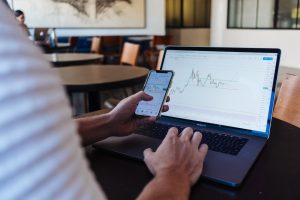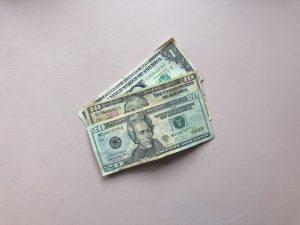Forex, or foreign exchange, is the largest financial market in the world, with an estimated daily trading volume of over $5 trillion. It involves buying and selling different currencies in order to make a profit from fluctuations in exchange rates. In order to participate in the Forex market, traders must use a broker, who will charge them various fees and commissions for their services. One such fee is the commission paid on limit orders.
A limit order is a type of order that allows traders to buy or sell a currency pair at a specific price, or better. For example, if the current market price of the EUR/USD pair is 1.2000, a trader might place a buy limit order at 1.1950, hoping to buy the currency pair at a lower price. Alternatively, a trader might place a sell limit order at 1.2050, hoping to sell the currency pair at a higher price.
When a limit order is executed, the trader pays a commission to their broker. This commission is typically a percentage of the total trade value, and can vary depending on the broker and the size of the trade. For example, a broker might charge a commission of 0.5% on a trade worth $10,000, meaning the trader would pay $50 in commission.
There are several factors that can affect the commission paid on a limit order. One of the most important is the size of the trade. Brokers will typically charge a higher commission on larger trades, as they require more work to execute and may involve more risk. For example, a broker might charge a commission of 1% on a trade worth $100,000, meaning the trader would pay $1,000 in commission.
Another factor that can affect the commission paid on a limit order is the type of account the trader has with their broker. Some brokers offer different account types with varying commission rates, depending on the trader’s level of experience and the size of their account. For example, a broker might offer a standard account with a commission of 0.5% and a minimum trade size of $10,000, and a premium account with a commission of 0.3% and a minimum trade size of $50,000.
The currency pair being traded can also affect the commission paid on a limit order. Some currency pairs are more volatile than others, meaning they are more likely to experience sudden price movements. Brokers may charge a higher commission on these pairs to reflect the increased risk. For example, a broker might charge a commission of 0.8% on the GBP/JPY pair, which is known for its volatility, compared to a commission of 0.5% on the EUR/USD pair, which is generally less volatile.
In addition to the commission paid on a limit order, traders may also be subject to other fees and charges. These can include spreads, which are the difference between the bid and ask prices of a currency pair, and overnight financing fees, which are charged for holding a position overnight. It is important for traders to understand all of the fees and charges associated with Forex trading before they begin, in order to avoid any unexpected costs.
In conclusion, the commission paid on a limit order in Forex trading can vary depending on a number of factors, including the size of the trade, the type of account the trader has, and the currency pair being traded. It is important for traders to understand all of the fees and charges associated with Forex trading in order to make informed decisions and avoid any unexpected costs. By working with a reputable broker and carefully managing their trades, traders can minimize their costs and maximize their profits in the exciting and dynamic world of Forex trading.





